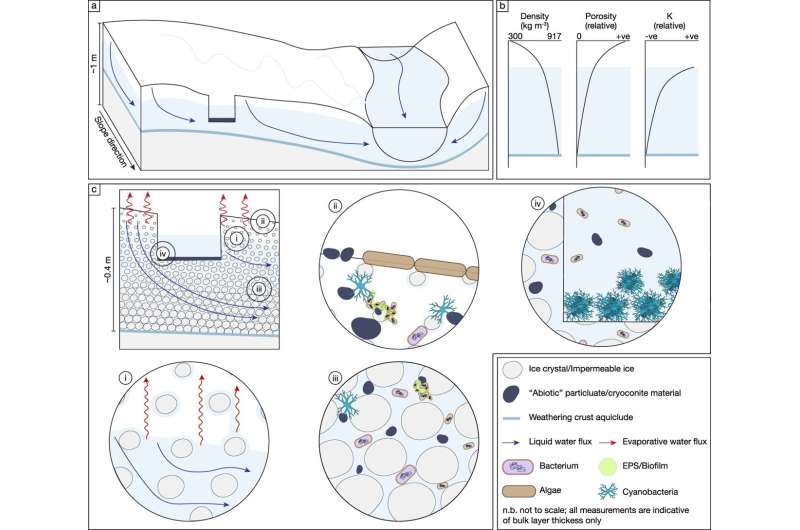November 17, 2022 report
Study shows hundreds of thousands of tons of bacteria are being released by melting glaciers

A team of researchers affiliated with multiple institutions across Europe, the U.K. and Canada has found that hundreds of thousands of tons of bacteria are currently being released annually into the environment by melting glaciers in the northern latitudes. In their paper published in the journal Communications Earth & Environment, the group describes sampling glacial runoff from multiple sites in Europe, North America and Greenland.
As climate change progresses, doomsday reports from around the world have proliferated. One alarming claim is that a virus or strain of bacteria will emerge from ancient ice that is impervious to the human immune system, killing off most, if not all, of humankind. In this new effort, the researchers have joined a growing effort to take samples of melting runoff from glaciers to learn more about their microbial ecosystems as a means to discover whether a threat exists, and if so, what sort.
The work involved collecting glacier runoff samples from eight glaciers in North America and Europe, and two from the Greenland ice cap. They studied the samples to learn more about the microbiota hosted in the runoff. They found tens of thousands of microbes in just millimeters of water and made estimates for the number of bacteria and algae that are currently being released from glaciers across the Northern Hemisphere—approximately 650,000 metric tons each year. They note that this is expected to continue for approximately 80 years, at which point, the glaciers will be gone.
The researchers did not study the bacteria individually, and thus did not spot any species that might pose a threat to human health. They did note that most of the bacteria were killed by the sun soon after exposure, suggesting that even if a human pathogen is among them, the chance of infection is slight. Bacteria in water samples, the researchers note, tend to have pigments that absorb sunlight, which further adds to warming in northern regions.
More information: Ian T. Stevens et al, Spatially consistent microbial biomass and future cellular carbon release from melting Northern Hemisphere glacier surfaces, Communications Earth & Environment (2022). DOI: 10.1038/s43247-022-00609-0
Journal information: Communications Earth & Environment
© 2022 Science X Network




















